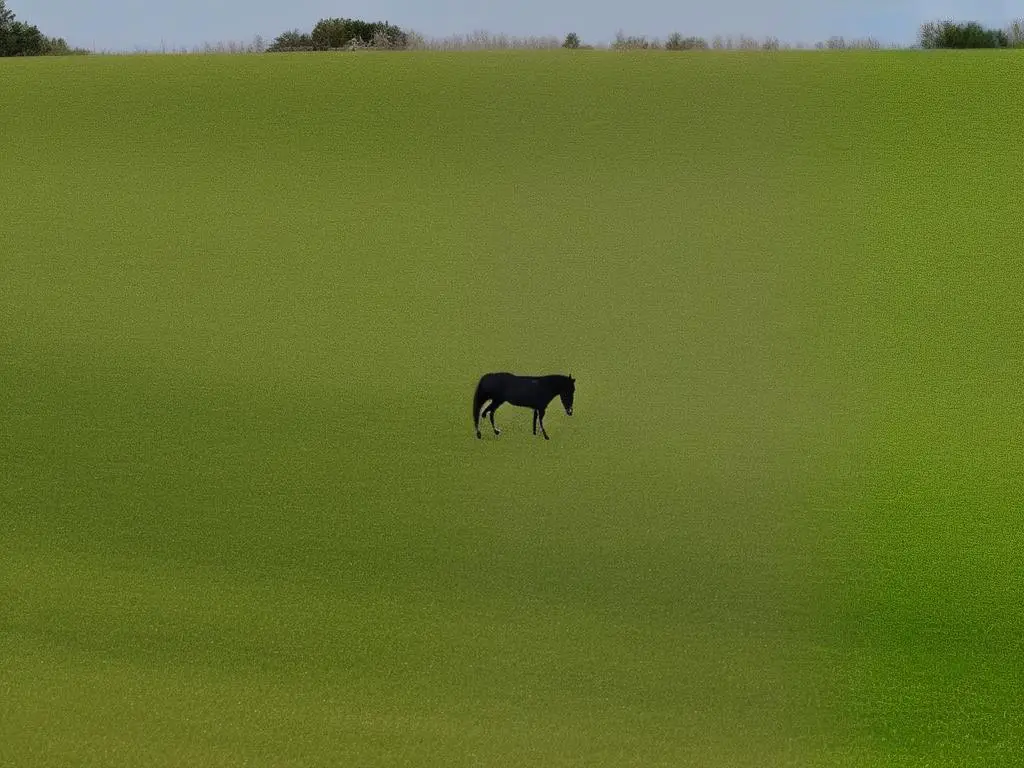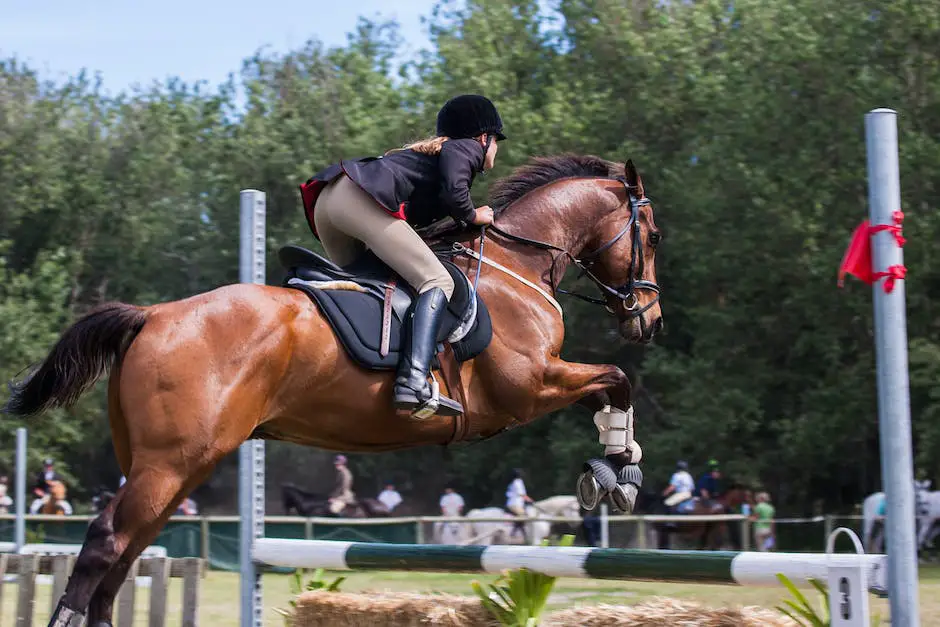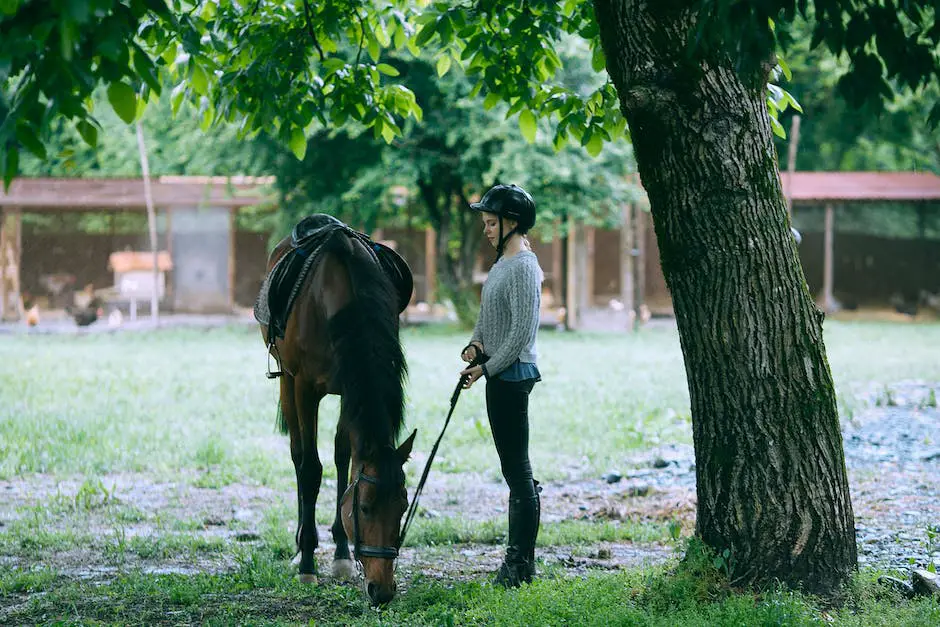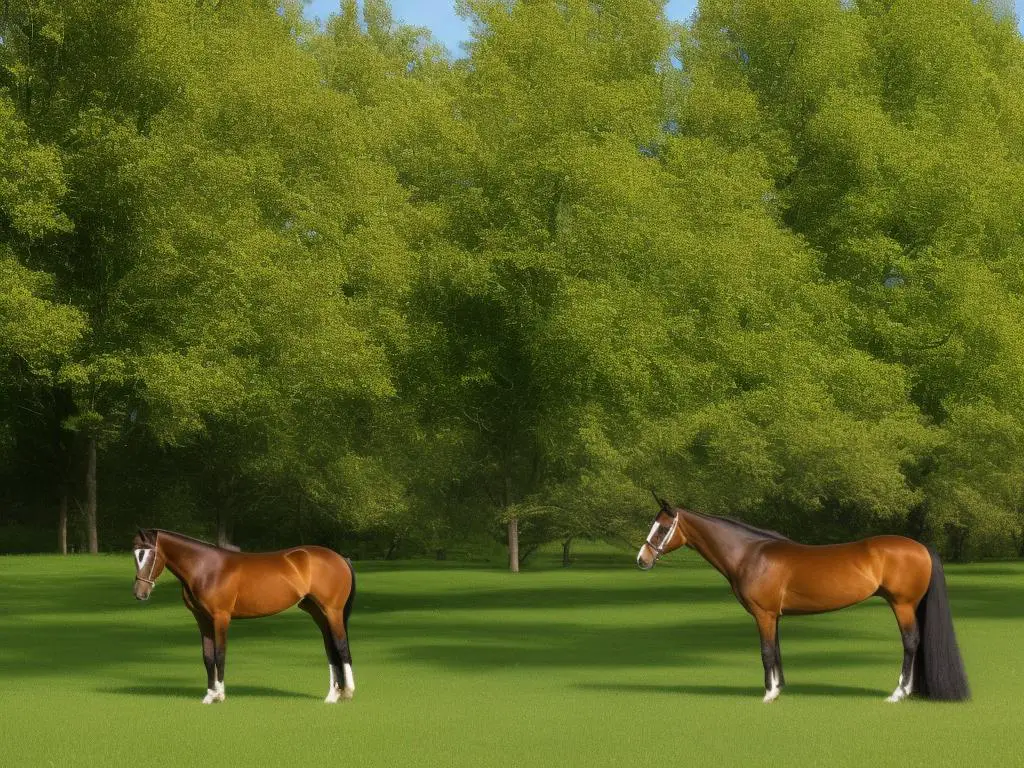Embarking on the exciting journey of Saddlebred horse training can be both rewarding and fulfilling. As a fellow enthusiast, this article will guide you through an array of essential topics that will help you become skilled in the art of Saddlebred horse training and performance.
Table of Contents (Horspedia)
Understanding Saddlebred Horse Breeds
The American Saddlebred horse, originally known as the American Horse, has a rich history that dates back to the late 1800s. These horses were originally bred in the heart of Kentucky, and their ancestry is deeply rooted in the Thoroughbred, Morgan, and Narragansett Pacer breeds. Saddlebred horses were initially used as utility horses, performing various tasks on farms and plantations. However, their unique combination of strength, elegance, and versatility allowed them to excel in performance and eventually become the preferred breed for riding and driving competitions. Understanding the distinct characteristics, history, and skillset of Saddlebred horses is essential for enthusiasts seeking to become proficient in their training and performance.
One of the primary qualities that sets Saddlebred horses apart from other breeds is their remarkable natural athleticism. They possess a high head carriage, elegant neck, and strong back, which make them exceptionally suited for riding and driving disciplines. Additionally, their impressive endurance and ability to learn quickly allow them to excel in various equestrian sports, such as show jumping, dressage, and three-day eventing. Saddlebred horses possess an extraordinary aptitude for the ‘five-gaited’ style, where they showcase their ability to perform the walk, trot, canter, slow gait, and rack. Their fluid and precise movements, along with their graceful presence, make them captivating to watch in the show ring.
Another notable characteristic of Saddlebred horses is their distinctive temperament. Often described as intelligent, sensitive, and spirited, these horses are known for their strong work ethic and dedication to their riders. Their eagerness to please and willingness to learn make them particularly suitable for training and performance. As enthusiasts or hobbyists aspiring to become skilled Saddlebred horse trainers, it is crucial to bear in mind that these horses require consistent and respectful training methods. Properly engaging the horse’s mind and body through progressive exercises, while simultaneously fostering trust and communication, will ultimately result in the best performance outcomes. Cultivating an understanding of the breed’s unique traits will enable those passionate about Saddlebred horses to unlock the full potential of these exceptional animals.

Saddlebred Training Equipment and Tack
As you embark on the journey of Saddlebred horse training, it is essential to be familiar with the variety of training equipment and tack required to ensure effective communication between the rider and the horse. One vital piece of equipment is the saddle, which must be specifically designed for Saddlebred horses. These saddles tend to have a cutback pommel, allowing for better freedom of movement for the horse’s high head carriage and powerful trot. A saddle pad is also needed to protect the horse’s back and provide cushioning from the saddle. In addition, a Saddlebred-specific bridle is required, along with a suitable bit, which may include a full cheek snaffle or a double bridle set up, depending on the horse’s level of training and discipline. By mastering the proper use of this equipment, your journey towards becoming an adept Saddlebred horse trainer will be both successful and fulfilling.
Various types of training aids and accessories are utilized in Saddlebred horse training to help further refine the horse’s performance and movement. Some common training aids include martingales, draw reins, side reins, and balance reins. These aids serve to help the horse maintain the proper head carriage, encourage engagement of the hindquarters, and promote overall balance and self-carriage. Additionally, whips and spurs may be used by riders as artificial aids to provide clear and precise communication with the horse. It is vital for the rider to have a good understanding of how to use these aids effectively and gently to ensure the horse’s well-being.
Safety equipment is of utmost importance in Saddlebred horse training for both the rider and the horse. A properly fitting helmet and boots with heel protection for the rider can help prevent serious injuries during training sessions. In addition, bell boots and splint boots offer protection and support for the horse’s legs during intense exercises. Groundwork exercises utilizing a lunge line and a well-fitted surcingle help to build strength, suppleness, and responsiveness in the early stages of training. By investing in the appropriate equipment and learning how to use these tools effectively, enthusiasts and horse trainers alike can ensure a successful and enjoyable experience for both horse and rider in Saddlebred horse training.

Developing a Training Plan
Creating a personalized long-term training plan for Saddlebred horses requires a thorough understanding of their unique needs, goals, and abilities. As each horse is an individual, it is crucial to tailor the training program to their specific character, strengths, and weaknesses. Start by evaluating your Saddlebred’s current skills, fitness levels, and temperament to determine the appropriate starting point for the training program. Given that Saddlebred horses are renowned for their exceptionally smooth gaits and high-stepping movement, it is essential to nurture and develop these natural abilities while maintaining their overall physical and mental well-being. Ensuring a well-structured and customized plan will help your Saddlebred horse reach its full potential while staying healthy and happy.
When creating a long-term training plan, it is vital to establish specific goals, whether they involve developing specific gaits, improving performance in the show ring, or building a strong foundation for future skills. These goals should be realistic and achievable within the set timeframe, ensuring that the horse is not pushed too hard or too fast, but rather progresses at a steady pace. Setting short-term milestones within the larger plan will allow for more effective tracking of progress and any necessary adjustments. It is also essential to consider the horse’s natural abilities and limitations when devising the plan, ensuring that the training methods employed are best suited to each individual horse.
For enthusiasts or hobbyists looking to become skilled in Saddlebred horse training, it’s essential to set clear goals and expectations while creating a successful long-term training plan. This plan should incorporate variety and consistency to keep the horse motivated and engaged. By including different exercises, alternating training environments, and gradually increasing difficulty, your Saddlebred horse can remain enthusiastic about learning and progress effectively. Finding the right balance between ground exercises, under-saddle work, and rest days will not only maintain the horse’s well-being but also prevent injury and cultivate a harmonious working relationship with its rider. This well-rounded approach can help your Saddlebred reach its full potential and excel in various equestrian disciplines, demonstrating the breed’s versatility and unique talents.

Fundamental Saddlebred Training Techniques
One core aspect of Saddlebred horse training is groundwork, which plays a crucial role in building trust and establishing effective communication between the trainer and the horse. Groundwork serves as the foundation for all future training by instilling respect, obedience, and responsiveness to a variety of cues. Some common groundwork exercises include lunging, guiding the horse in circles around the trainer to develop balance, rhythm, and obedience to direction changes. Longlining is another essential exercise, utilizing two lunge lines attached to the horse’s bridle or surcingle, which simulates the feel of the reins without a rider. This technique teaches the horse to respond to rein pressure and vocal cues while simultaneously enhancing gait quality, engagement, and flexibility. These foundational skills will pave the way for more advanced training in the saddle, eventually allowing your Saddlebred horse to shine in disciplined performance and competition.
Under-saddle training is another vital component for Saddlebred horses, focusing on developing their natural athleticism and show-worthy talents. In this stage, the horse learns to carry a rider and performs various gaits, such as the walk, trot, and canter, while maintaining a smooth and balanced rhythm. Some fundamental under-saddle exercises involve transitions between gaits, lateral movements, and developing a strong, consistent contact with the bit. By incorporating these exercises into the horse’s daily routine, the trainer encourages muscle development, suppleness, and increased responsiveness to the rider’s aids. Additionally, Saddlebred horses are known for their high-stepping action and animated gaits, requiring specialized training to showcase these unique traits in the show ring effectively.As Saddlebred horses progress in their training, it is crucial to gradually introduce more advanced techniques to refine their skills and enhance their show-worthy talents. One effective method for achieving this is through the use of cavaletti poles, which help improve the horse’s stride, balance, and elevation. By incorporating ground pole exercises and progressively raising the poles, the horse learns to gracefully and fluidly negotiate obstacles. Trainers can then introduce more challenging movements such as flying lead changes, collection, and extension, which further amplify the Saddlebred’s natural showmanship and flair. Throughout each stage of training, it is essential to ensure that the horse is comfortable, engaged, and responsive, as these factors contribute significantly to the cultivation of a successful and well-rounded Saddlebred show horse.

Advanced Maneuvers and Tricks
In Saddlebred horse training, perfecting advanced maneuvers and tricks is vital for showcasing the horse’s exceptional abilities during competitions and exhibitions. One key maneuver to focus on is the slow gait, a distinctive four-beat lateral gait that highlights the horse’s ability to engage its hindquarters, elevate its forehand, and move with perfect cadence and collection. This captivating gait is an essential aspect of Saddlebred competitions as it demonstrates the horse’s athleticism and poise. Another crucial gait to master is the rack, an eye-catching, highly animated movement where the horse moves swiftly yet smoothly, further accentuating the breed’s dynamic and versatile abilities.To strengthen the Saddlebred’s endurance and suppleness, incorporating lateral exercises such as leg-yielding, shoulders-in, and haunches-in are crucial. These exercises help enhance flexibility and balance, allowing the horse to perform more advanced and challenging tricks. Additionally, the Saddlebred can be trained to perform an elegant Spanish walk, where the horse lifts its front legs high with each step, giving an impressive display of power and finesse. The Spanish walk is often used as an exhibition trick in shows and parades.As you delve deeper into your Saddlebred training journey, it is crucial to observe your horse’s conformation and work on enhancing any areas of weakness in its movement or strength. Incorporating exercises such as transitions, lateral work, and collection on a regular basis will help refine your horse’s skills and abilities. As the horse’s training advances, remember to be patient and consistent, as this will aid your Saddlebred in performing intricate maneuvers and tricks with poise and self-assurance, ultimately leading to success in competitions and exhibitions.

Saddlebred Show Preparation and Etiquette
Transitioning from training to preparing a Saddlebred horse for a show includes focusing on various aspects to guarantee a positive competition experience. One essential element is grooming, as your horse needs to appear visually impressive and properly presented to the judges. This involves frequent baths using top-quality shampoo and conditioner, comprehensive daily brushing, and proper mane and tail care. Pay special attention to clipping the bridle path, muzzle, ears, and legs; ensuring the hooves are clean and polished, and highlighting any white markings with whitening treatments. Moreover, staying up-to-date with routine veterinary and farrier appointments is crucial for maintaining your horse’s health and overall condition.
Tacking is another key aspect of show preparation, as your horse’s tack should be clean, well-fitted, and appropriate for the class you will be competing in. Familiarize yourself with specific discipline requirements, and ensure that your saddle, bridle, and all other accessories meet these criteria. In addition, it is important to have established, consistent training routines and to practice regularly to develop the partnership between the horse and rider. Preparing for events such as halter classes, 5-gaited classes, or country pleasure classes will each require a different focus in training exercises, so it is essential to tailor your sessions to best suit the class requirements.
Effectively loading and transporting a Saddlebred horse requires calm, confident handling and patience. Ensuring your trailer is in good repair and that the horse is comfortable and secure inside, with access to hay and water, is crucial for keeping them relaxed during the trip. Maintain a composed and professional demeanor upon arrival, as this will not only make a good impression on fellow competitors and show officials, but also help keep your horse at ease in the bustling atmosphere. Courteous and respectful behavior towards other competitors and punctuality for your classes are essential aspects of event etiquette. Keep your horse’s needs in mind throughout the event, providing ample food, water, and rest, as this will help both horse and rider stay healthy and perform at their best in the ring.

Maintaining Saddlebred Horse Health and Well-being
Another crucial aspect of maintaining the health and well-being of Saddlebred horses is providing a proper diet. A balanced diet is essential for optimum performance and overall health. Typically, a Saddlebred horse’s diet consists of high-quality hay, grains, and an assortment of supplements tailored to the horse’s individual needs. Access to clean, fresh water at all times is of paramount importance. Adhering to regular feeding schedules and avoiding sudden changes in diet can help prevent gastrointestinal distress and other digestive issues. Consulting with a veterinarian or equine nutritionist to determine the most appropriate diet for your horse is a key component of ensuring their health and happiness.
Daily exercise and activity are vital to a Saddlebred horse’s physical and emotional well-being. This breed is known for its high energy and intelligence, which requires both mental and physical stimulation. Consistent training sessions and a well-designed exercise program are essential to keep the horse in good physical condition and to manage its energy levels. Additionally, proper exercise promotes good circulation, muscle tone, and overall agility. In between training sessions, Saddlebred horses enjoy turnout time, where they can socialize with other equines and engage in natural behaviors, such as grazing and play, which contribute to their psychological well-being.
Routine hoof care and dental maintenance are also crucial for a Saddlebred horse’s overall health. Hoof care includes regular trimming and balancing by a qualified farrier, as well as daily hoof picking and inspection for signs of injury or infection. Good hoof care prevents lameness and promotes soundness, which is especially important for a working horse. Similarly, dental care is essential for proper digestion and preventing painful issues, such as sharp edges or abscesses. Regular check-ups by a veterinarian or equine dentist, along with routine maintenance such as floating (filing down sharp points), will ensure your horse’s teeth remain healthy. Lastly, managing stress and fostering a stable environment can aid in maintaining the emotional health of your Saddlebred horse. Providing a consistent routine, positive training methods, and a calm, supportive atmosphere will support your horse’s well-being, overall happiness, and training success.

With a thorough understanding of Saddlebred breeds, training equipment, and techniques, a comprehensive training plan, and the knowledge to maintain your horse’s health and well-being, you will be well-equipped to succeed in the world of Saddlebred horse training. Moreover, you’ll be able to ensure the continued success and enjoyment of both you and your horse as you explore the captivating world of Saddlebred competitions and exhibitions. Armed with this knowledge, your passion for Saddlebred horse training will only continue to grow.
